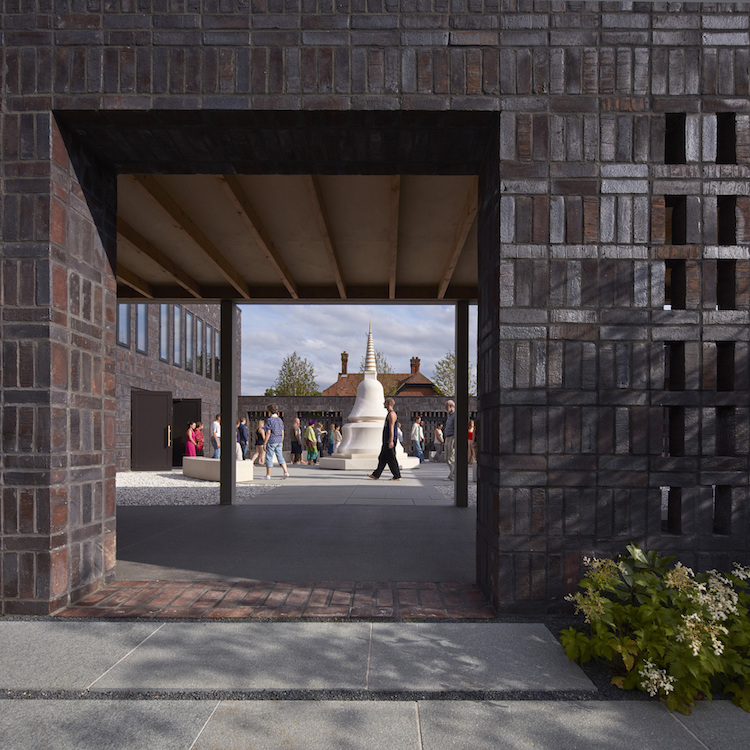WALSHAM LE WILLOWS, Suffolk—Nestled among the trees in the Suffolk countryside you’ll find the peaceful Vajrasana Buddhist Retreat. Designed by Walters & Cohen Architects, the Potash Farm’s renovation increased its capacity, improved accessibility and ensured a new a shrine room enveloped by a dark, multi-toned brick, ArchDaily writes.
The new building is sensitive to its surroundings and, as such, the design follows the Buddhist principle of ‘doing the least harm’, by minimising the impact on the environment, and building on the footprint of existing outbuildings.



The architects write this has been achieved through the use of “simple materials that provide a balance between modesty and reverence for the spiritual aspects of the centre, the shrine room and associated courtyards.”
The single-story, charred timber buildings wrap around the courtyard providing communal living and dining rooms and bedroom pods. The pitched roof design draws light and air into these rooms, providing a generous sense of space, the architects add.


The retreat is run by the London Buddhist Centre, it is also used for carers on respite and those dealing with issues such as stress, addiction and anxiety, the centre writes.
A retreat is a rare chance to live in a way far removed from television, tube stations, stress and city strife. It is an opportunity to relax, as well as to find inspiration and challenge yourself. For many, it is a life-changing experience they never forget. You can deepen your meditation, cultivate mindfulness, and learn about Buddhism. A retreat is also a good way to meet new friends.



It is the first time in the UK a new building has been designed specifically around the Buddhist practice as opposed to reusing existing buildings, ArchDaily writes. Walters & Cohen designed the new retreat centre after winning a competition run by the London Buddhist Centre in 2013, starting work in March 2015 and completed in 2016. The design team visited retreat centers across the UK and even undertook their own weekend retreat to ensure they understood and shared the ethos of the client.
Do you love or loathe this example of brick architecture from the world of contemporary ceramic art and contemporary ceramics. Share your thoughts below.

Add your valued opinion to this post.